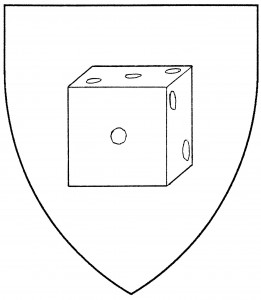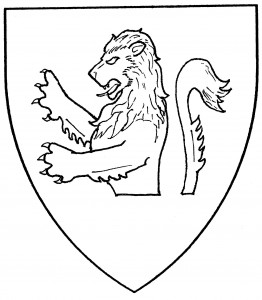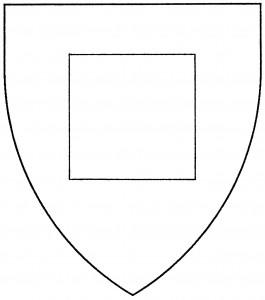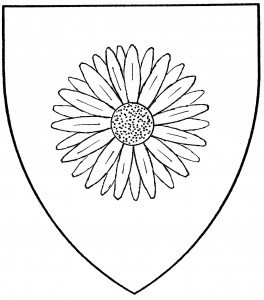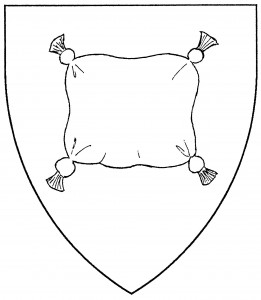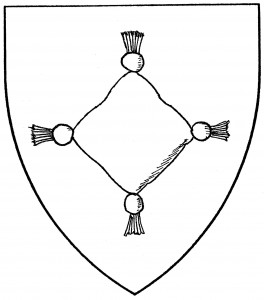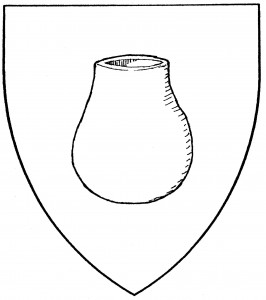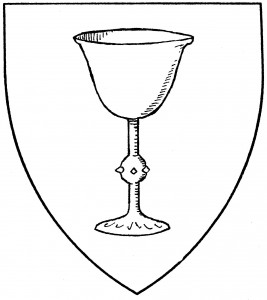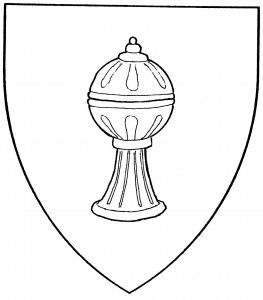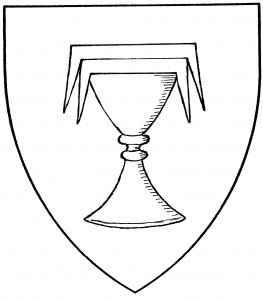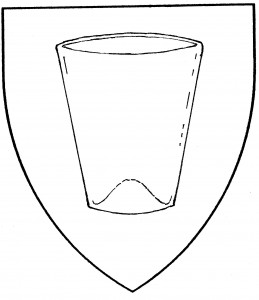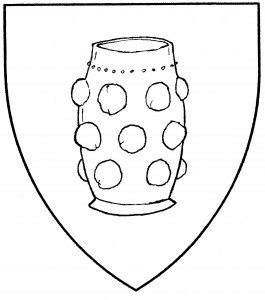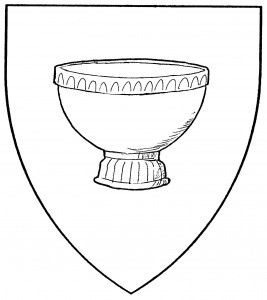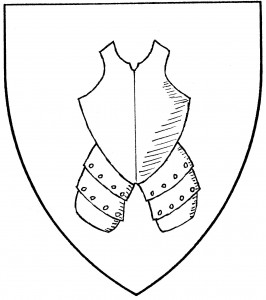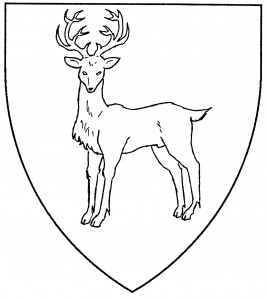
Stag at gaze (Period)
The deer is a hooved, antlered beast famed for its speed; it was medievally considered the embodiment of purity and nobility among the beasts. The term “deer” is the generic term; more specific terms may be used in blazons, the exact term often chosen for canting purposes. These include “stag”, “hart”, and “buck” for the male; “doe” or “hind” for the female; and “fawn” or “yearling” for the young. The male is characterized by his antlers (called his “attires”): the buck is held to have broader, more palmate attires than the stag [Bromley & Child 12], but this subtle distinction was not consistently followed in period. The female and young are antlerless. Both genders are found in period armory: the stag c.1310, in the arms of Leghville, and the hind c.1275, in the arms of the Counts von Tierstein [ANA2 57].
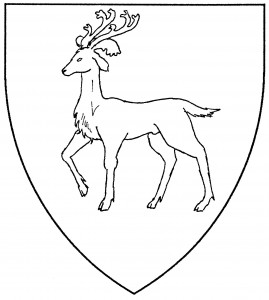
Reindeer trippant (Period)
Other beasts of the deer category include the “reindeer”, the “roe” or “roebuck”, and the “elk”. These variants are distinguished by the shape of their attires: the elk and roe are shown more or less as in nature, while the reindeer has an heraldic stylization of two horns up, two down, as seen in the arms of Bowet, Archbishop of York, c.1460 [RH]. The roe seems to be chosen mostly for the cant, as in the arms of Rogers, c.1480 [DBA2 294]. The elk of Europe is the same beast as the “moose” of modern North America; the latter term had been used in Society blazons at one point, but is no longer registered, in favor of the period term. The elk is a period charge, found as a supporter of the Worshipful Company of Curriers, 1583 [Bromley & Child 62].
A “deer proper” is understood to be brown. There are some special terms used to blazon deer: A deer “at gaze” is statant guardant; a deer “lodged” is couchant; a deer “trippant” is passant. The illustrations show a stag at gaze, and a reindeer trippant. For related charges, see antelope (natural).
The King of the Outlands bears: Vert, a stag argent, attired and unguled, salient from between the boughs of a laurel wreath, in chief a Saxon crown, all within a bordure embattled Or.
The Shire of Buckland Cross bears: Argent, two bucks counter-salient in saltire proper within a laurel wreath vert, a bordure embattled sable.
Elisabeth Goodchilde bears: Pean, a stag trippant erminois.
Margaret Palmer bears: Vert, three stags lodged Or.
Sigmundr Ulvr bears: Or, in pale three harts springing within a bordure sable.
Arianwen de Lynn bears: Quarterly azure and gules, a hind courant to sinister within an orle argent.
Greta Rahikainen bears: Azure, three reindeer trippant argent.
Suibhne an Einigh bears: Per pale argent and vert, an elk rampant proper.
